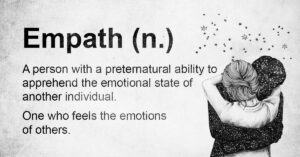How to Build a Robust Employee Communication Guide?

A successful enterprise is measured not only by how well you communicate with their clients but also by how well your internal employees communicate. It’s an integral component for your organization to update your employees about new policies, prepare for a disaster, listen to employee ideas, or maintain organizational safety.
Building an employee communication guide can be a daunting task but requires careful planning and execution.
But before you begin to build one, let us first look at why you need an employee communication guide.
Why Does Your Company Need an Employee Communication Guide?
Effective communication among employees of your organization means vital information and other materials are within their reach. It leads to better productivity, improved employee engagement, and enhanced company offerings i.e. products and services.
A report on communication in the workplace found nearly 70% of employees would be more productive with effective internal communication.
Also, the same report found 39% of employees don’t think there is enough collaboration. Another McKinsey report found that implementing social technologies for employee interactions increases productivity by 20-25%.
From these statistics, it’s clear that effective employee communication is necessary through a streamlined process. Internal employee communication directly impacts the company culture. The more you share with your employees, the better they’ll be able to communicate and interact with each other.
Many other unique forces also contribute to building robust employee communication. Let’s go through them one by one:
How to Build an Efficient Employee Communication Guide?
1. Assess Your Existing Communication Flow
First things first, building a new communication strategy means prepping up for organizational change management. You need to aim for a smooth transition and map out a step by step process. The first step is to assess your existing communication flow.
Even if you don’t have a strategy in place, assess how employees are communicating and what are the potential downsides and bottlenecks that hinder productivity.
In other words, find areas of improvement in your existing communication flow that help you achieve better outcomes and increase employee productivity. Here’s what you should assess and improve:
- Performance: Assess how effective your current communication guide is with its strengths and weaknesses.
- The goal of Communication: Identify the goal you want to achieve with employee communication and what part the current guide plays in it.
- Channels for Communication: Find what are the most used channels for communication by your employees and how effective they are in carrying out everyday tasks.
2. Set Goals and Objectives to Accomplice
Once you have assessed your existing communication guide, next up is defining the goals and objectives that you want to achieve by implementing a new communication guide. Set realistic and achievable goals as the new guide won’t dramatically change the employee experience overnight.
This strategy isn’t just for the top management to decide. Involving your employees and understanding their goals and expectations can help you articulate your internal communication goals. Conduct a survey and understand their expectations and how they would want their informational and communicational needs to be addressed.
Only through this can you know what areas need improvement when you want to reach your goals, and what tools you should incorporate.
3. Define your Employee Traits
Just think about how you develop your customer communication strategy. You map them out and place them into different categories based on their demographics. Why do you do this? So that we can build personalized communication campaigns and level up customer engagement.
You need to follow the same philosophy for your internal communications as well.
The workforce of today is extremely diverse, with each employee embodying different backgrounds, roles, and preferences. According to a survey conducted by HBR, 62% of employees have colleagues from three or more cultures and 89% of employees serve on at least one global team.
Therefore, it becomes essential to segment your audiences based on their job functions, job nature, geographical locations, generations, and languages to understand them better and effectively communicate with them.
Instead of overwhelming your employees with too much information, you can simply send the right message to the right people. It will ultimately make it easier for you to recognize the best way to design the formats and content that will best appeal to every segment.
4. Create Personalized Communication Guide
Indeed, your employees are not going to move down the sales funnel and make a purchase. But that doesn’t mean they don’t seek tailored messages. This process becomes pretty straightforward if you get the previous one right.
Think about it — A frontline worker would need very different information and will have different doubts about their job as compared to someone behind the desk. A person working in the China office wouldn’t majorly understand your company policies which are penned down in English.
One thing you need to etch in your brain is that to create a full-fledged internal employee communication strategy, you need to make it about the employees and not about what would be convenient for you. You have to do away with irrelevant content and instead build a hyper-personalized communication strategy to foster employee engagement.
5. Distribute & Streamline the Communication
Often in large enterprises, syncing your communication becomes a challenge. Employee communication is not just limited to announcements and company updates. If that was the case, emails would’ve been enough.
But you’re having multiple types of conversations, with different types of employees on multiple channels. How do you achieve efficiency in your operations regardless?
You can only improve employee communications if the employees have a clutter-free workspace where employees can share updates and notify about their work.
To manage the complexities of modern workplaces, you can utilize project management tools like Trello that helps employees track work progresses, set deadlines, organize their new projects, daily activities, and notify changes to team members. This leads to better fluidity in cross-team collaboration and lays the ground rules for communication for day-to-day tasks.
6. Pick & Implement an Internal Communication Channel
Following the previous point, to streamline your internal communication, you first need to pick a channel to do so. While deciding the channel, ask yourself:
- Who is your target audience?
- What type of messages do you want to send?
- How can you reach employees in different job roles?
- Do you need to integrate other tools into your communication channel?
- How can you notify a certain set of audiences?
Since most employees are remotely working from home, they need mediums through which they can still feel part of teams and the company culture. 77% of remote work employees feel they’re treated right with best-in-class technology solutions.
Companies are now leveraging enterprise-grade software like Slack to streamline their team communication and chat in real-time. They also provide numerous integrations that help you streamline your communication.
Through these tools, you’re not just enhancing their productivity. You’re also building a forum where employees can share their ideas and make them feel they’re an integral part of the team even if they’re not physically present at the office.
7. Measure Your Success
Finally, you need to check how good of a job you did. How else can you assess the strategy and optimize it to fetch better results in the future?
Measure your key performance indicators to check if you’ve achieved your goals. You can either do this quarterly or monthly depending on the volume of communications, and your employee strength.
Moreover, be open to feedback from your employees and show them that you’re listening. Check if they are satisfied with the channels, messages if there are any hindrances or lack of approachability from management.
Ask them for suggestions and if there is room for improvement. Being on the receiving end means they would have a lot of insights that can help you improve your internal communication strategy.
Conclusion
Leveling up your employees’ communication means paving the way for higher productivity, and reduced turnover. Your employees are one of the most integral stakeholders who ultimately decide your end-consumer experience. Ultimately, well-communicated employees are going to bring in more revenue and also provide the same seamless communication experience to your customers.






